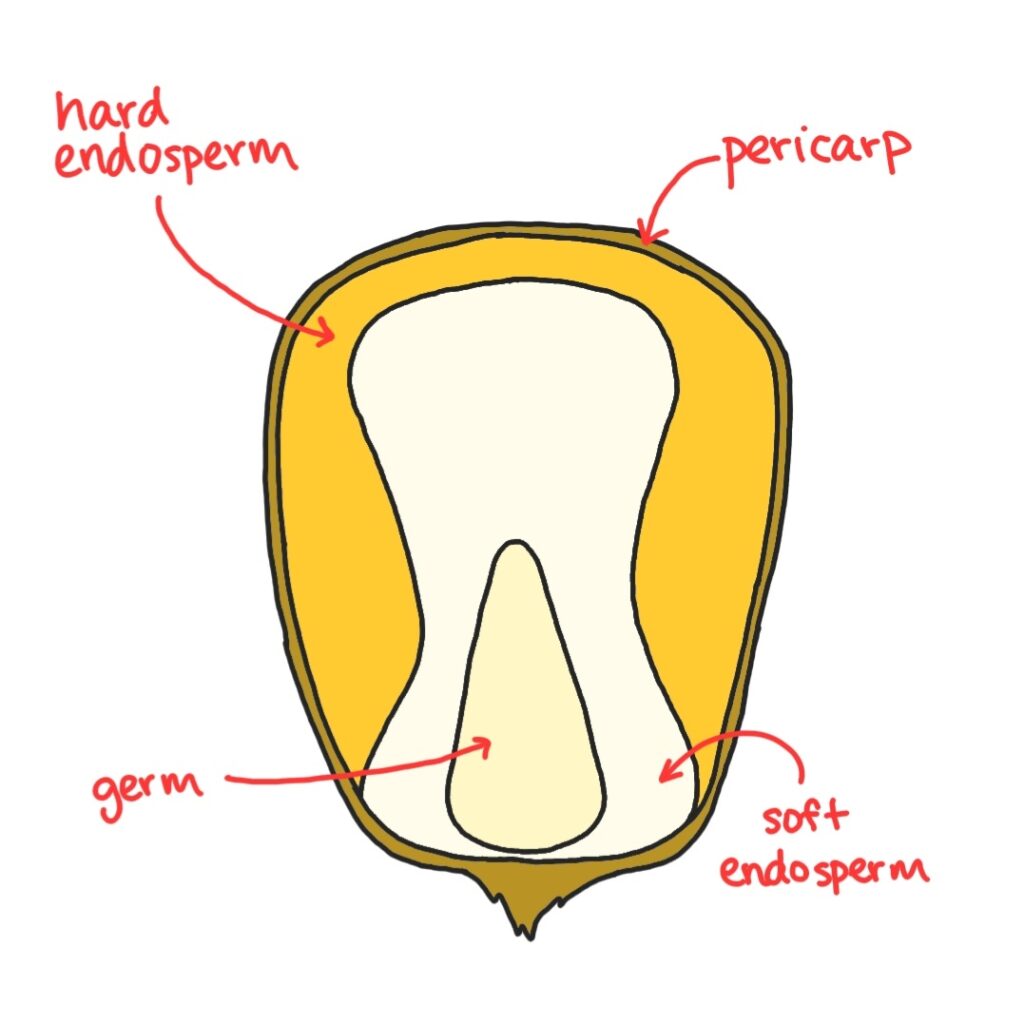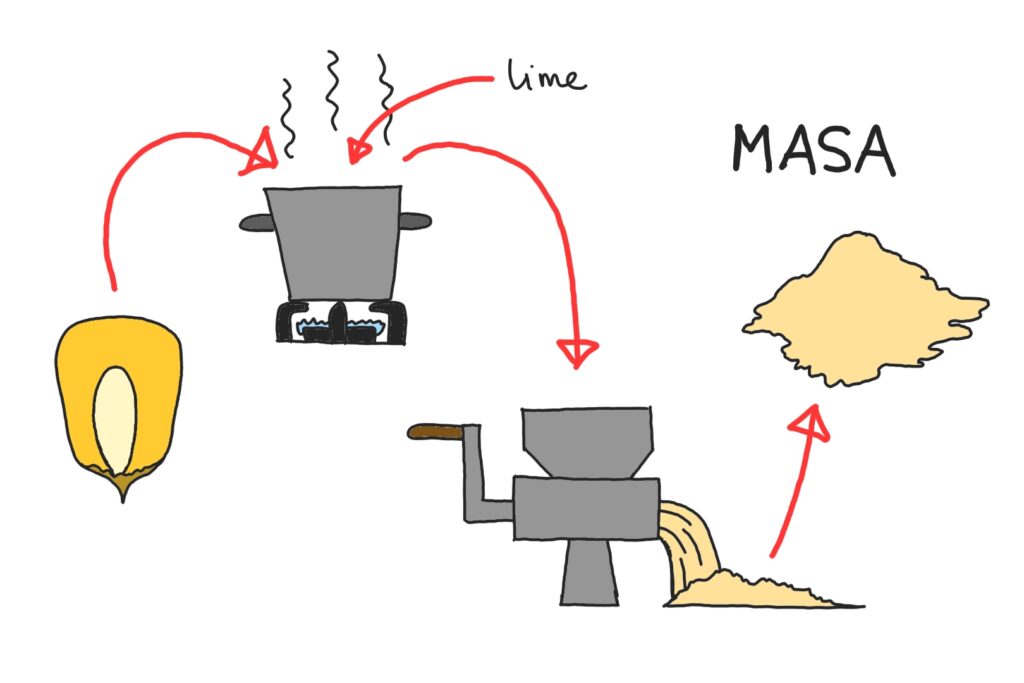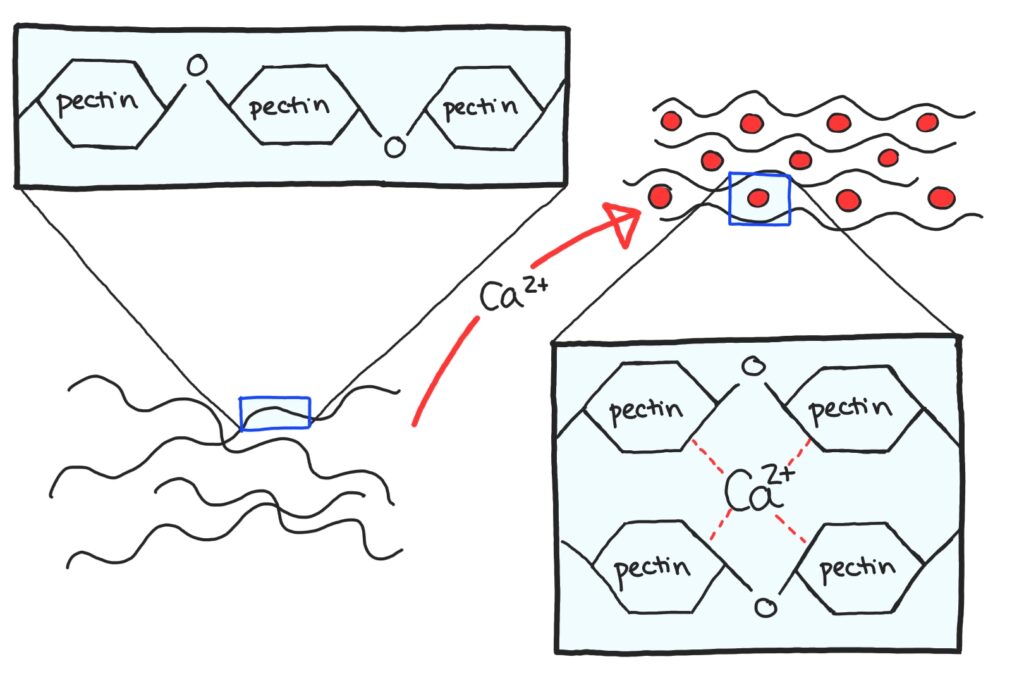
Corn Flour vs Masa Harina – What’s the Difference?
At first glance, masa harina and corn flour look the same. Both are fine yellowish powders that smell faintly of corn. It would be easy to conclude that a recipe that calls for corn flour could use masa harina, and vice versa. This, however, is not the case at all. So what’s the difference between corn flour and masa harina? The short answer: nixtamalization. The long answer? Well that’s what this blog is for!

Components of Corn
A corn kernel, on the most basic level, is a seed. Its purpose is to be put into the ground, where it can grow into a new corn plant. Like an egg, which has a shell, egg white, and yolk, a corn kernel has a pericarp, endosperm, and germ (Khanal, 2022). The pericarp acts as a shell and protects the kernel from the environment, the endosperm is like the egg white and holds carbohydrates and protein for the growth of the plant, and the germ is like the yolk and holds the genetic information for the plant as well as energy dense oils to help with germination. The endosperm is split into hard and soft, where hard has higher levels of protein, and soft has higher levels of carbohydrates. The endosperm is also where antioxidants like carotenoids are stored. Different parts of the kernel have different properties, and can be separated out from each other during milling, resulting in different corn products like grits or corn flour.
Corn Flour
Corn flour is finely ground corn, typically coming from the soft endosperm part of the kernel. It should be noted that what is called “corn flour” in England is what we call “corn starch” in the United States. Unlike corn flour which contains starch, protein and oil, corn starch has been separated from the protein and oil leaving only the starch, making it good for thickening soups and sauces. Corn flour, on the other hand, is better for baking and frying. Corn flour is as fine as all-purpose flour, but unlike wheat flour, corn flour does not contain any gluten. Gluten molecules, when mixed with water, rearrange themselves into long sticky chains, which allows wheat dough to stick to itself. Corn flour does not have gluten, so a dough formed with corn flour falls apart and does not retain its shape. Because of this, when it’s incorporated into dishes, corn flour needs binders to keep its shape, like eggs, as you will see in many recipes such as our ice cream cone recipe. Corn flour has a delicious buttery flavor and is gluten-free, but its uses can be limited because it cannot maintain its own shape independently. This is where nixtamalization comes in.
What is Nixtamalization?

Nixtamalization is a cooking process performed on corn that allows it to stick to itself in a way similar to wheat flour. The process is complex, and was originally discovered by the indigenous people of Mesoamerica. Nixtamalization has been done for thousands of years. Different cultures and communities have slightly different approaches, but the underlying methods stay the same (Orchardson, 2022).
To nixtamalize corn, kernels are first boiled with food-grade lime for about an hour. Lime doesn’t refer to the fruit, but rather calcium oxide, which is derived from limestone. It’s a white powder that makes the water cloudy, and this lime, in combination with the heat, is what allows for the nixtamalization reaction to occur. The corn is then steeped in the lime-water for about half a day. The corn is drained and rinsed, and the resulting nixtamalized kernels are called nixtamal.
Nixtamal can be ground with water to create a dough, called masa. Masa has the ability to stick to itself, which means it can be used to make foods like tortillas, which cannot be made with corn flour. Masa not used immediately can be dried into a powder similar to corn flour, called masa harina. When rehydrated, masa harina once again becomes masa, and regains the sticky properties of the fresh dough. As such, masa harina has become an immensely popular staple all across Latin America to make dishes such as tortillas and tamales.
Masa Harina and Corn Flour

While there are clear differences between masa harina and corn flour, both can be used to make a variety of delicious dishes. One thing to note is that typically, corn products and nixtamalized corn products cannot be used interchangeably in recipes. Professor Torbert’s Orange Corn products are not nixtamalized, but still come together to make some amazing dishes! In contrast to typical corn tortilla recipes, our easy traditional tortillas include gluten (from all-purpose flour) to glue the tortillas together instead of pectin. This recipe provides the best of both worlds – the flavor of corn tortillas and the texture of flour tortillas. Our Orange Corn Flour also makes amazing fry batters with a uniquely rich flavor and crisp texture. Try it out with our vegetable fritters or fried chicken recipe for a distinctly nutty, buttery taste no one will be able to resist!
Now the next time you have a recipe that calls for either masa harina or corn flour, you’ll know what product to choose and a little bit about the science behind how it works!
Don’t forget!
Our recipe library includes a variety of Orange Corn Flour recipes to check out including imaginative desserts, gluten-free baking, pancakes, corn pudding, breadings and fry batters. Grab a bag of Orange Corn Flour today on our website and have it on hand for your next baking or cooking project!
Sources:
Khanal, Samir. (2022). HAWAII BIOENERGY MASTER PLAN Bioenergy Technology.
Orchardson, E. (2022, June 15). What is nixtamalization? CIMMYT. Retrieved October 6, 2022, from https://www.cimmyt.org/news/what-is-nixtamalization/
